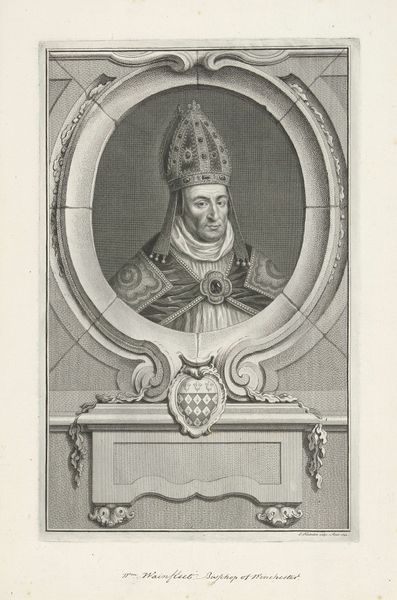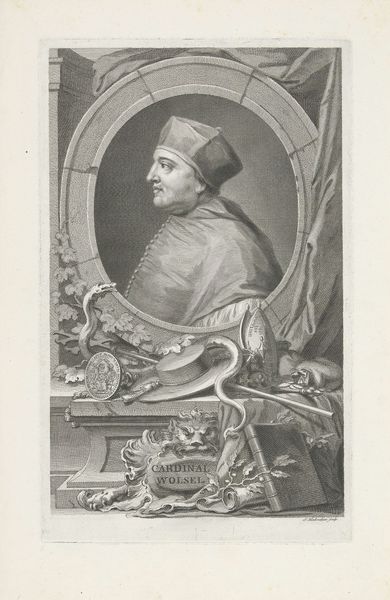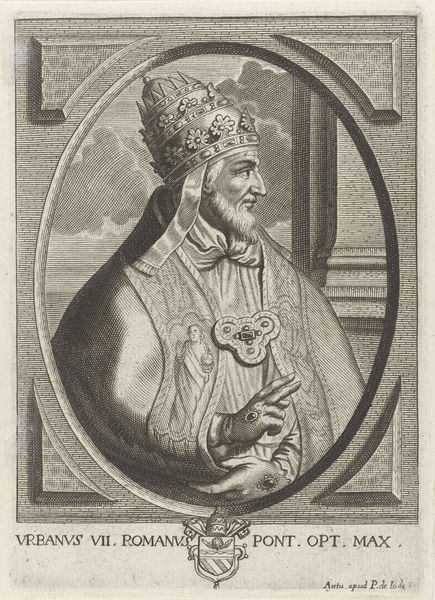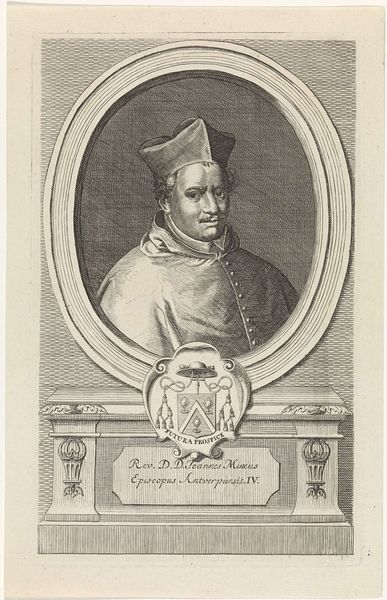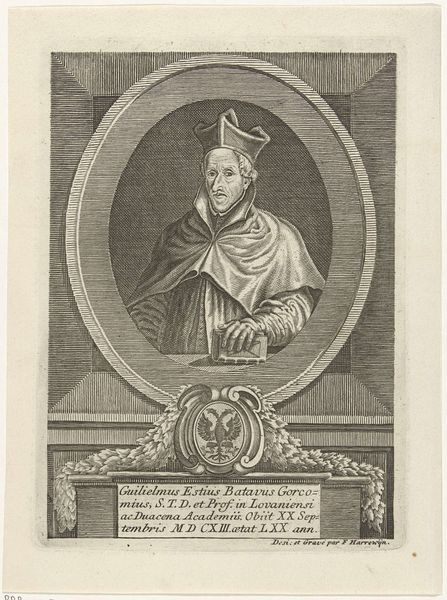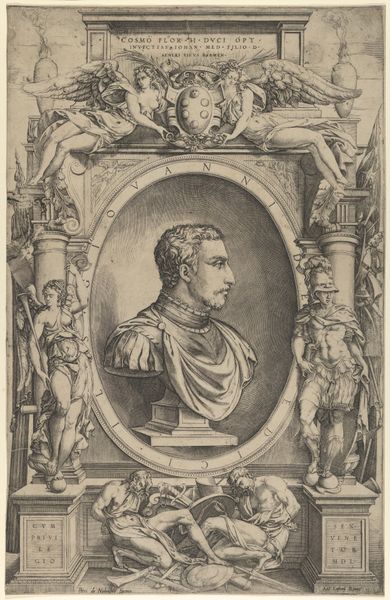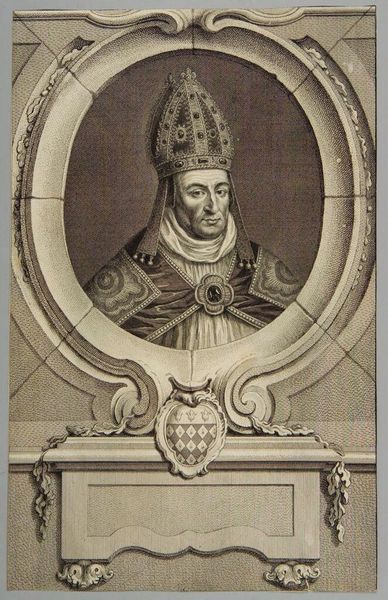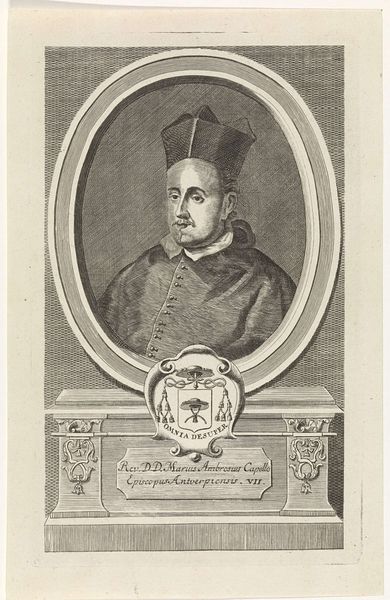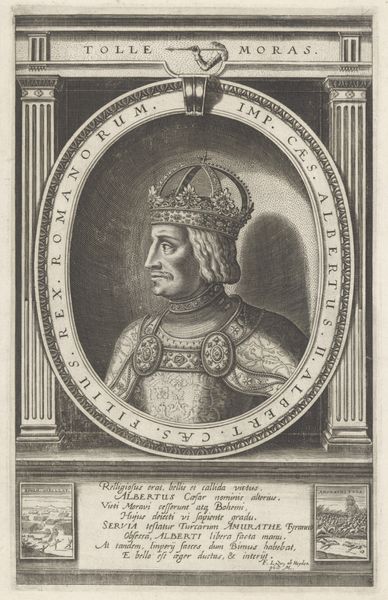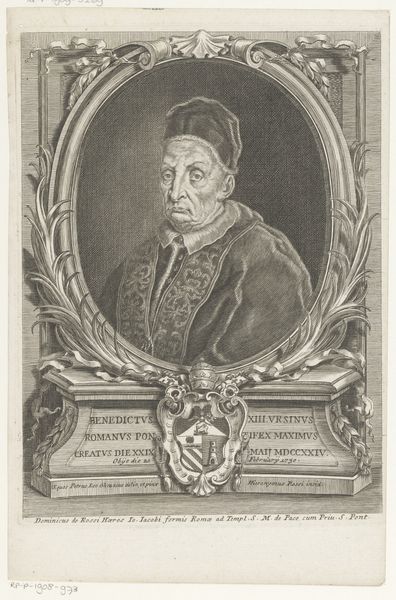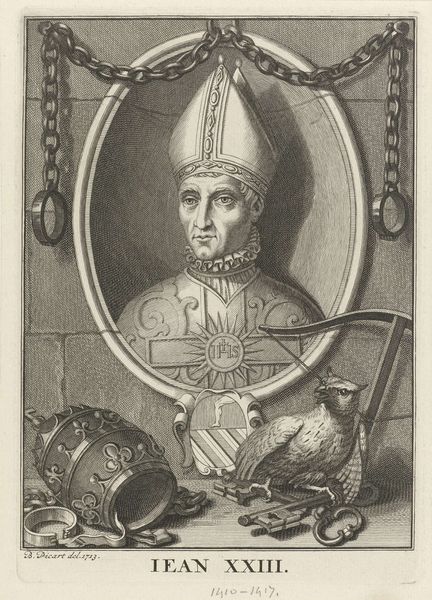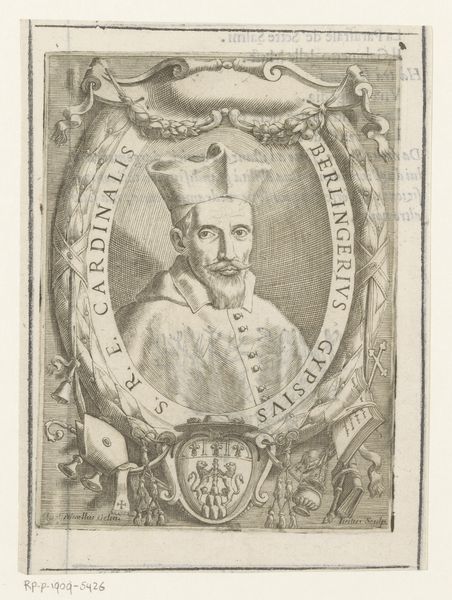
print, graphite, engraving
#
portrait
#
baroque
# print
#
old engraving style
#
graphite
#
graphite
#
engraving
#
columned text
Dimensions: height 374 mm, width 238 mm
Copyright: Rijks Museum: Open Domain
Editor: Here we have Jacob Houbraken's "Portrait of William Wickham," created between 1736 and 1738, a graphite engraving currently residing at the Rijksmuseum. The detail is incredible! I’m struck by how formal and symbolic everything appears. What do you see in this piece, in terms of symbolic language? Curator: Notice how Wickham is framed within an ornate oval, replete with cherubs and what appears to be a Bishop’s mitre and crozier below. Consider these symbols – these aren't just decorative elements. They tell us about power, authority, and divinity. The cherubs suggest divine blessing or approval. What do you make of the symbols of religious power that surround him? Editor: I guess the mitre and crozier underscore Wickham's role within the church. It's like the artist is building this visual narrative of religious legitimacy, maybe even subtly reinforcing a divine right. Curator: Precisely. Houbraken, skilled as he was, wasn't simply creating a likeness. He was crafting an image laden with cultural meaning. Consider how repeated visual symbols establish authority – even today, how are symbols used in institutions? Editor: I hadn't thought about it that way. It’s like he’s not just portraying a man, but an idea – of ordained leadership sanctioned by heaven. And you are right, it continues to this day... I think this portrait operates as more than just a picture, but a powerful statement of social and religious standing. Thank you, this has been truly enlightening. Curator: Indeed! The enduring power of symbols speaks across centuries; in this portrait, Houbraken successfully captured the very essence of Wickham's perceived authority. A great image to look at.
Comments
No comments
Be the first to comment and join the conversation on the ultimate creative platform.
